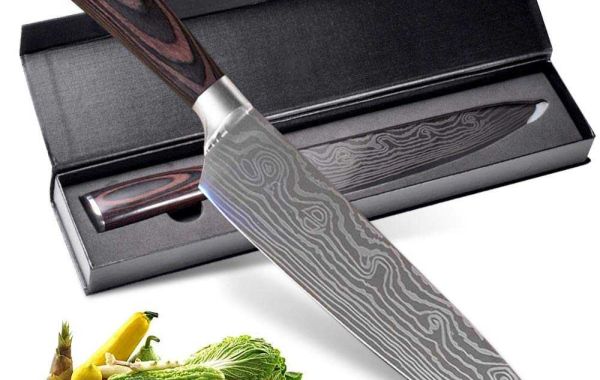In the heart of every great culinary endeavor lies a set of impeccable tools, and professional chef knives are undoubtedly the crown jewels of any kitchen. Their precision, balance, and versatility can transform ordinary ingredients into extraordinary dishes, making the investment in high-quality knives a wise choice for anyone serious about their culinary craft.
Types of Professional Chef Knives
Understanding Different Blade Styles
When it comes to professional chef knives, a variety of blade styles cater to specific tasks. From the all-purpose chef's knife to the precision of paring knives and the flexibility of boning knives, each type is designed to excel in particular cutting techniques, ensuring that no ingredient is too challenging to handle.
The Versatility of Chef's Knife
The quintessential chef's knife, often referred to as a "gyuto" in Japanese cutlery, is the go-to tool for a wide range of tasks. Its broad blade and curved edge facilitate slicing, dicing, chopping, and even delicate mincing, making it an indispensable companion for every culinary enthusiast.
Slicing and Dicing with Santoku Knife
Hailing from Japan, the santoku knife offers a unique design that excels in slicing and dicing. With its straighter edge and granton indentations, it reduces friction between the blade and the food, preventing ingredients from sticking and ensuring smooth, precise cuts.
Precision Work with Paring Knife
When intricate detail is required, the paring knife steps up to the plate. Its compact size and pointed tip make it perfect for peeling, trimming, and intricate decorative work, proving that sometimes, the smallest tools have the most significant impact.
Specialized Tasks with Boning Knife and Fillet Knife
For tasks that demand precision and finesse around bones and joints, boning knives and fillet knives take the spotlight. Whether you're preparing a delicate fillet of fish or deboning a chicken, these knives provide the control needed to achieve flawless results.
Key Features to Consider
Blade Material: Carbon Steel vs. Stainless Steel
The choice of blade material significantly impacts a knife's performance and maintenance. Carbon steel offers exceptional sharpness and edge retention but requires diligent care to prevent rust. On the other hand, stainless steel is more forgiving in terms of maintenance but might sacrifice a bit of sharpness.
Tang and Handle Construction
A knife's durability and balance are influenced by its tang, the extension of the blade into the handle. Full tang knives, where the blade extends through the handle, provide better stability and control. Handle materials also play a role in comfort and grip, with options ranging from wood to synthetic materials.
Edge Grinds: Straight Edge vs. Serrated Edge
Straight-edged knives offer clean cuts and are ideal for push-and-slice techniques. Serrated knives, or knives with a scalloped edge, excel at cutting through crusty bread and delicate items like tomatoes. Choosing the right edge grind depends on the tasks you commonly tackle.
Bolster and Finger Guard for Safety
A bolster is the thick junction between the blade and the handle, providing balance and safety. Some knives feature a finger guard, preventing accidental slippage onto the blade. These features ensure a secure grip and minimize the risk of accidents during intensive cutting sessions.
Choosing the Perfect Knife for You
Ergonomics: Finding the Right Handle Fit
An extension of your hand, the knife's handle should be comfortable to hold for extended periods. Ergonomic designs with contoured handles offer a comfortable grip that minimizes fatigue and enhances control.
Balancing Weight and Comfort
The weight distribution between the blade and the handle affects how a knife feels in your hand. A well-balanced knife requires less effort during use, reducing strain on your wrist and arm muscles.
Testing the Grip and Control
Before committing to a knife, hold it in your hand to assess how it feels. A secure grip and a knife that feels like a natural extension of your hand will make your culinary tasks more enjoyable and efficient.
Caring for Your Chef Knives
Proper Storage to Prevent Damage
Storing your knives properly is essential for maintaining their edge and preventing accidents. A knife block, magnetic strip, or blade guards can keep your knives safe and in top condition.
Hand Washing vs. Dishwasher: Best Practices
While some knives claim to be dishwasher-safe, hand washing is recommended to prolong their lifespan. Harsh detergents and high heat in dishwashers can damage the blade and handle materials over time.
Honing vs. Sharpening: Maintaining the Edge
Regular honing realigns the blade's edge, keeping it sharp between sharpening sessions. Sharpening, on the other hand, involves removing a small amount of metal to restore the blade's sharpness. Finding the right balance between honing and sharpening is key to maintaining your knife's performance.
Top Professional Chef Knives in the Market
Wusthof Classic Chef's Knife: A Timeless Companion
With a reputation for excellence, the Wusthof Classic Chef's Knife is a staple in many kitchens. Its precision-forged blade, full tang construction, and ergonomic handle make it a trusted partner for a wide range of culinary tasks.
Shun Premier Santoku Knife: Japanese Precision
Embodying the artistry of Japanese craftsmanship, the Shun Premier Santoku Knife offers exceptional sharpness and a striking hammered finish. The Damascus steel blade and walnut handle combine form and function seamlessly.
Mercer Culinary Genesis Paring Knife: Affordable Excellence
For those seeking quality on a budget, the Mercer Culinary Genesis Paring Knife delivers. Its high-carbon German steel blade and ergonomic Santoprene handle provide a comfortable and durable tool for intricate tasks.
Investing in Quality
Longevity: Why Professional Knives are Worth It
While the upfront cost of professional chef knives might be higher, their longevity and performance make them a worthwhile investment. A quality knife can last a lifetime with proper care, ultimately saving you money in the long run.
The ROI of Efficient Cooking
Professional chef knives not only enhance the quality of your dishes but also streamline your cooking process. The efficiency and precision they bring to your kitchen can lead to increased creativity and enjoyment in your culinary endeavors.
Conclusion
In the realm of culinary arts, professional chef knives are more than just tools – they're extensions of your creativity and skill. From mastering basic techniques to pushing the boundaries of culinary innovation, these knives are your trusted companions. So, whether you're a seasoned chef or an enthusiastic home cook, investing in high-quality chef knives is a decision that will serve you well in your culinary journey.








